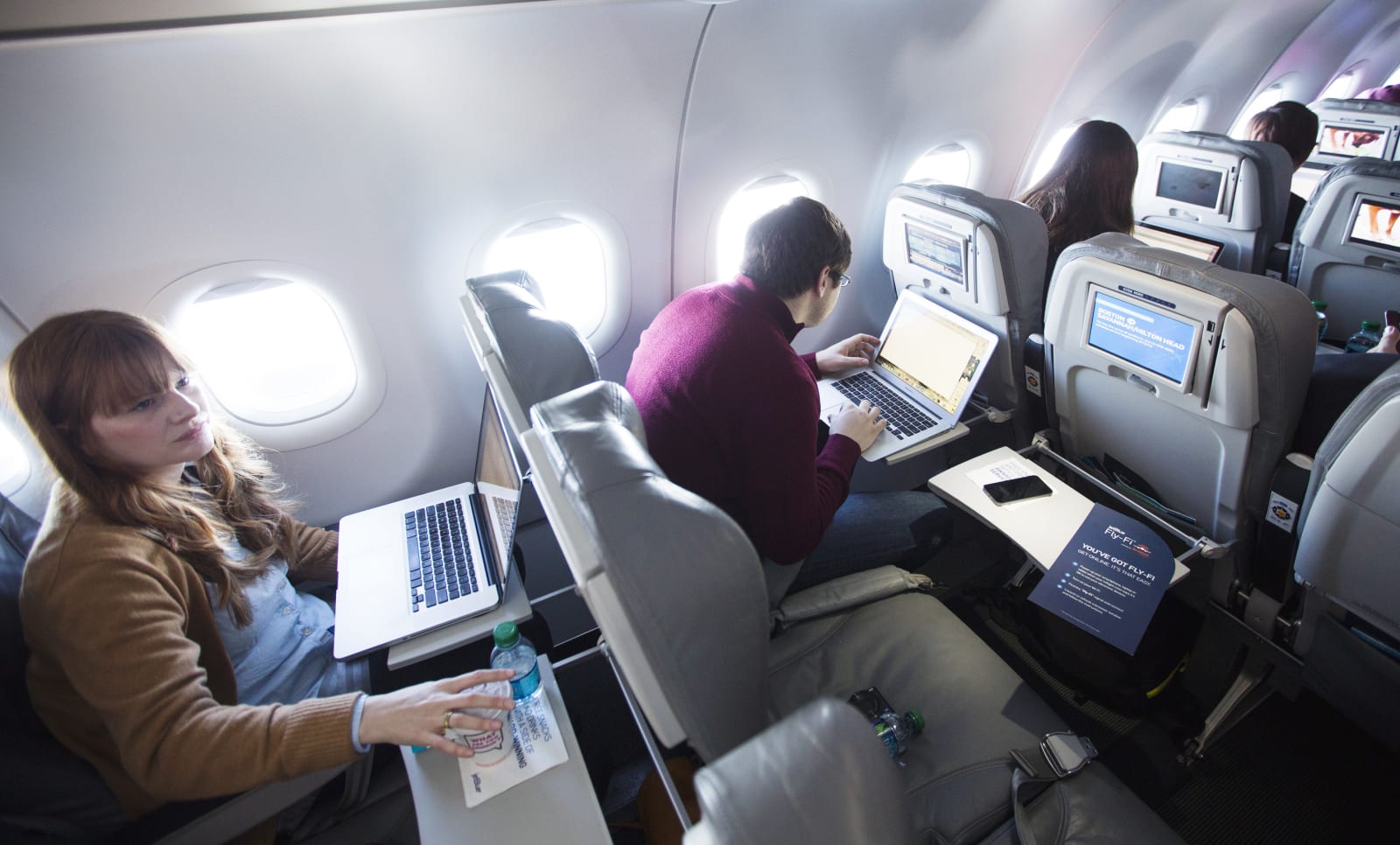
Gogo's test plane isn't your typical jet: it seats just nine passengers, and there's no bathroom; just a closet in the back stacked with networking gear. The company, easily the biggest name in in-flight WiFi, uses the aircraft as a flying lab, where it can test everything from throughput speeds to the log-in experience. It's a small plane that flies out of a small airfield, Aurora Municipal Airport in Illinois, and it's normally just Gogo staffers onboard. Today, the company invited a few reporters aboard to test its newest air-to-ground WiFi service, ATG-4. As you can imagine, newer means faster: ATG-4 is rated for max download speeds of 9.8 Mbps, up from 3.1 Mbps with the last-gen service. It also helps that video streaming services like Netflix, Hulu and HBO Go are now blocked, which should ensure that no one person abuses his WiFi privileges.
As it happens, ATG-4 is already live on approximately 40 planes run by US Airways, Delta and Virgin America. (United has said it plans to introduce the service on select flights in the first half of 2013.) In theory, then, the best way to test ATG-4's performance might be to slip unnoticed onto a commercial flight, and see what it's like to share bandwidth with 20 other people. What's neat about the Gogo test plane, though, is that it can toggle back and forth between ATG and ATG-4, making it easier to compare performance between the two. What's more, though the test plane seats nine, Gogo is able to simulate a crowded flight, with 20 to 30 passengers attempting to use the internet at once. After 90 minutes of flying over Illinois and Missouri, we've got some first-hand impressions and also some pics, if aviation porn is your cup of tea. Read on for more.
Continue reading Engadget tours Gogo's flying test plane, tries its improved ATG-4 in-flight WiFi (hands-on)
Filed under: Transportation, Wireless
Engadget tours Gogo's flying test plane, tries its improved ATG-4 in-flight WiFi (hands-on) originally appeared on Engadget on Mon, 12 Nov 2012 16:30:00 EDT. Please see our terms for use of feeds.
Permalink | |
Email this |
Comments
 If you want faster WiFi when you fly and don't mind paying for it, American Airlines is upgrading its WiFi systems on over 500 domestic aircraft, according to Bloomberg. To get those speeds the carrier is dumping GoGo's terrestrial Ku-band internet s...
If you want faster WiFi when you fly and don't mind paying for it, American Airlines is upgrading its WiFi systems on over 500 domestic aircraft, according to Bloomberg. To get those speeds the carrier is dumping GoGo's terrestrial Ku-band internet s...
 If you want faster WiFi when you fly and don't mind paying for it, American Airlines is upgrading its WiFi systems on over 500 domestic aircraft, according to Bloomberg. To get those speeds the carrier is dumping GoGo's terrestrial Ku-band internet s...
If you want faster WiFi when you fly and don't mind paying for it, American Airlines is upgrading its WiFi systems on over 500 domestic aircraft, according to Bloomberg. To get those speeds the carrier is dumping GoGo's terrestrial Ku-band internet s...
 American Airlines is equipping a fleet of Boeing 737 MAX planes with in-flight WiFi other than Gogo's. It has inked a deal with California-based company ViaSat, which also provides internet connection to some of Virgin America's newest A320 planes. V...
American Airlines is equipping a fleet of Boeing 737 MAX planes with in-flight WiFi other than Gogo's. It has inked a deal with California-based company ViaSat, which also provides internet connection to some of Virgin America's newest A320 planes. V...













